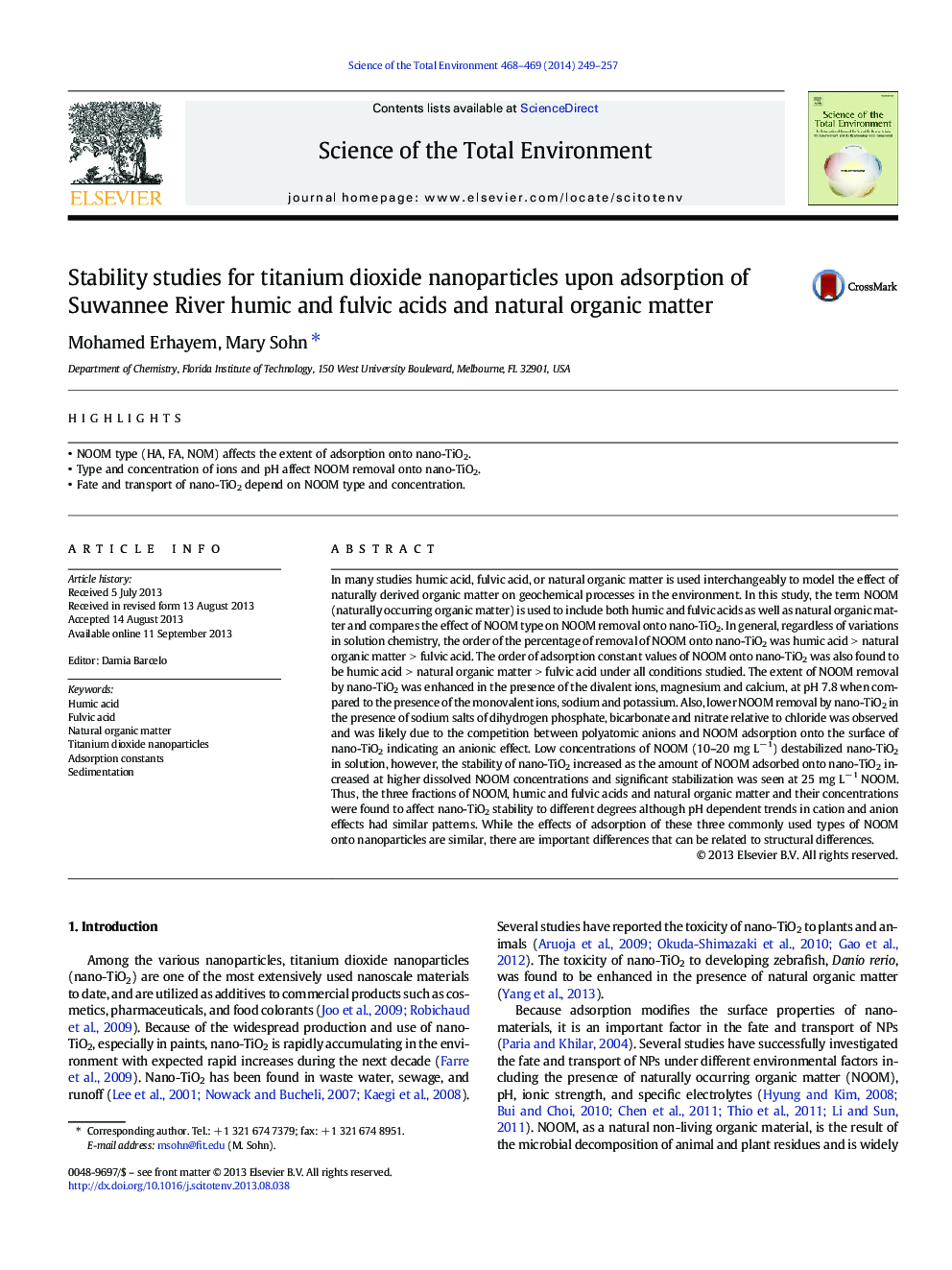| کد مقاله | کد نشریه | سال انتشار | مقاله انگلیسی | نسخه تمام متن |
|---|---|---|---|---|
| 6332460 | 1619794 | 2014 | 9 صفحه PDF | دانلود رایگان |
عنوان انگلیسی مقاله ISI
Stability studies for titanium dioxide nanoparticles upon adsorption of Suwannee River humic and fulvic acids and natural organic matter
ترجمه فارسی عنوان
مطالعات پایداری برای نانوذرات دی اکسید تیتانیوم با جذب اسید هومیک و اسیدفولیک و ماده آلی طبیعی
دانلود مقاله + سفارش ترجمه
دانلود مقاله ISI انگلیسی
رایگان برای ایرانیان
کلمات کلیدی
اسید هومیک، اسید فولویک، ماده طبیعی آلی، نانوذرات دی اکسید تیتانیوم، ثابت جذب، رسوبگذاری،
موضوعات مرتبط
علوم زیستی و بیوفناوری
علوم محیط زیست
شیمی زیست محیطی
چکیده انگلیسی
In many studies humic acid, fulvic acid, or natural organic matter is used interchangeably to model the effect of naturally derived organic matter on geochemical processes in the environment. In this study, the term NOOM (naturally occurring organic matter) is used to include both humic and fulvic acids as well as natural organic matter and compares the effect of NOOM type on NOOM removal onto nano-TiO2. In general, regardless of variations in solution chemistry, the order of the percentage of removal of NOOM onto nano-TiO2 was humic acid > natural organic matter > fulvic acid. The order of adsorption constant values of NOOM onto nano-TiO2 was also found to be humic acid > natural organic matter > fulvic acid under all conditions studied. The extent of NOOM removal by nano-TiO2 was enhanced in the presence of the divalent ions, magnesium and calcium, at pH 7.8 when compared to the presence of the monovalent ions, sodium and potassium. Also, lower NOOM removal by nano-TiO2 in the presence of sodium salts of dihydrogen phosphate, bicarbonate and nitrate relative to chloride was observed and was likely due to the competition between polyatomic anions and NOOM adsorption onto the surface of nano-TiO2 indicating an anionic effect. Low concentrations of NOOM (10-20 mg Lâ 1) destabilized nano-TiO2 in solution, however, the stability of nano-TiO2 increased as the amount of NOOM adsorbed onto nano-TiO2 increased at higher dissolved NOOM concentrations and significant stabilization was seen at 25 mg Lâ 1 NOOM. Thus, the three fractions of NOOM, humic and fulvic acids and natural organic matter and their concentrations were found to affect nano-TiO2 stability to different degrees although pH dependent trends in cation and anion effects had similar patterns. While the effects of adsorption of these three commonly used types of NOOM onto nanoparticles are similar, there are important differences that can be related to structural differences.
ناشر
Database: Elsevier - ScienceDirect (ساینس دایرکت)
Journal: Science of The Total Environment - Volumes 468â469, 15 January 2014, Pages 249-257
Journal: Science of The Total Environment - Volumes 468â469, 15 January 2014, Pages 249-257
نویسندگان
Mohamed Erhayem, Mary Sohn,
